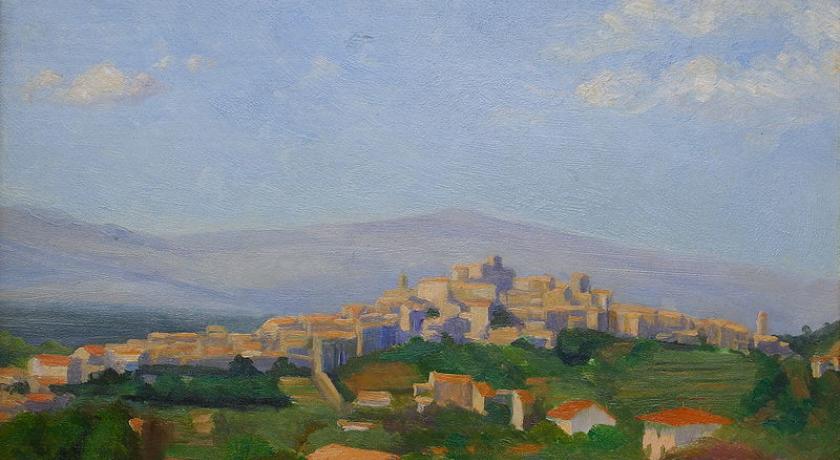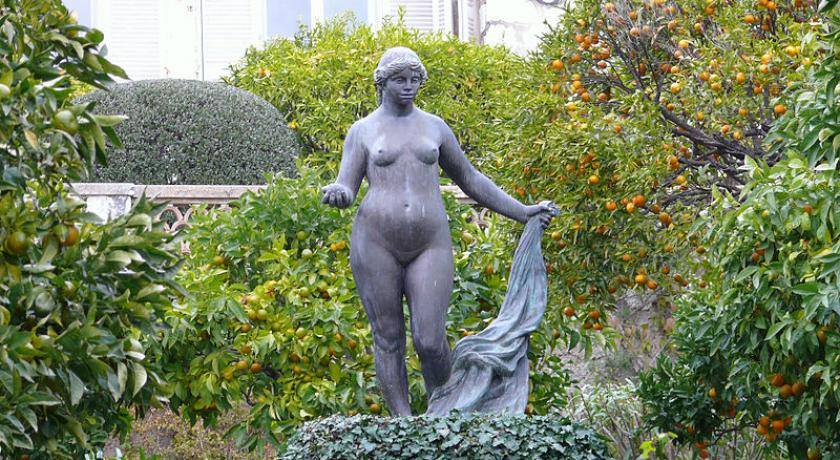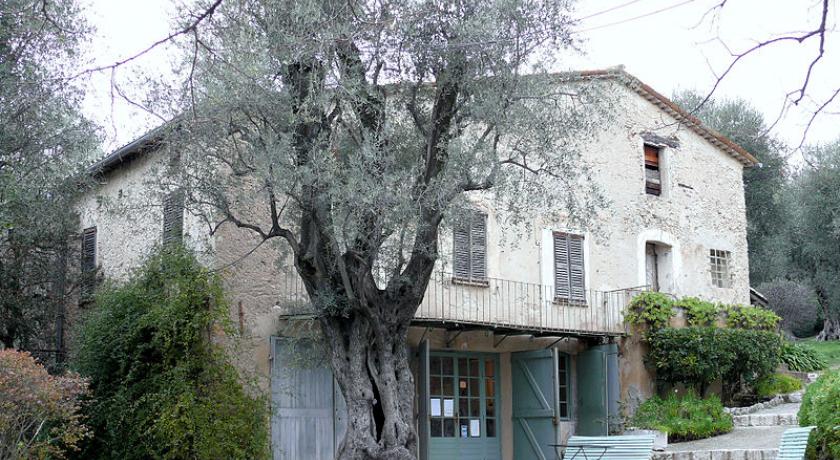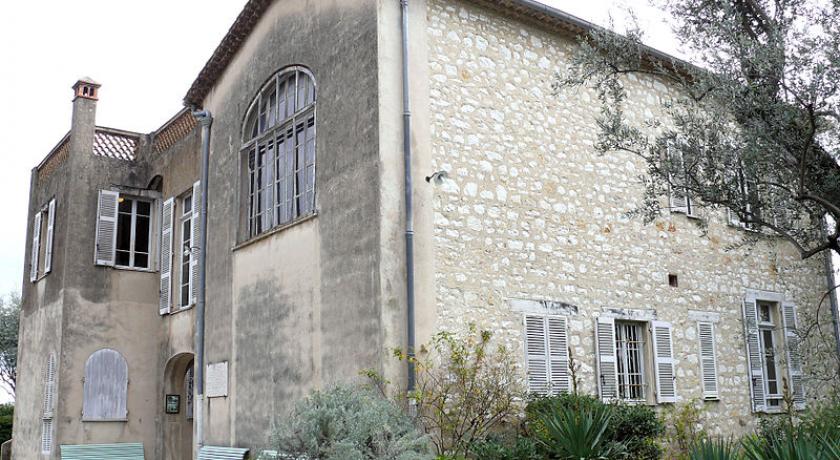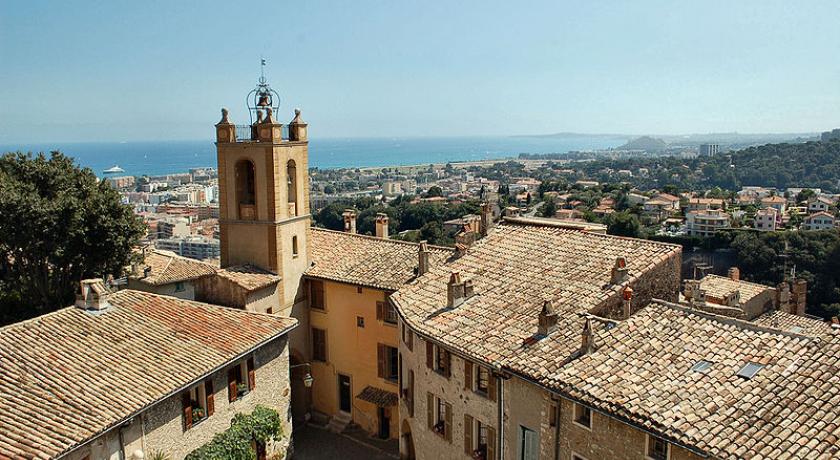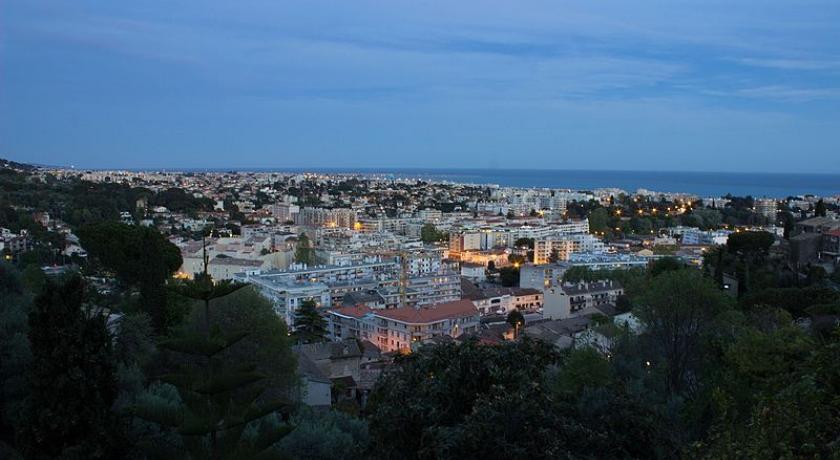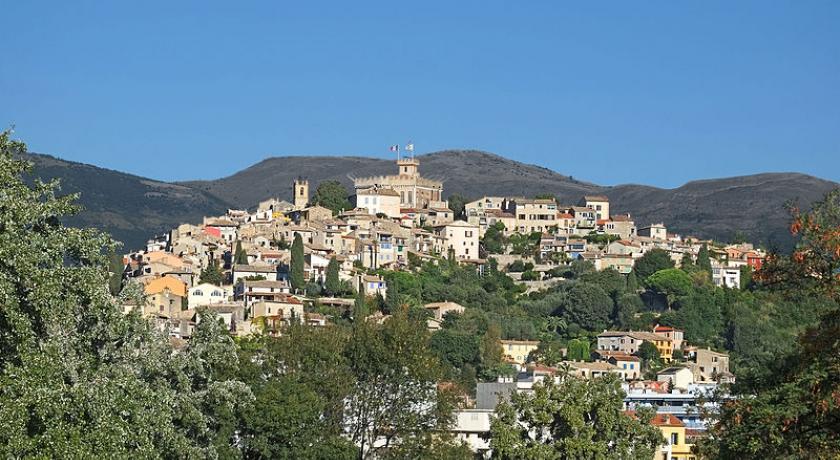Description
Cagnes-sur-Mer (French pronunciation: [kaɲ syʁ mɛʁ], Occitan: Canha de Mar) is a town in the Alpes-Maritimes department, in the Provence-Alpes-Côte d'Azur region of France. It is part of the metropolis Nice Côte d'Azur. Its inhabitants are called the Cagnois.
Local culture and heritage
Places and monuments
The municipality contains many monuments and objects listed in the cultural heritage inventory.
Religious buildings
- Saint Peter and Paul Church, 13th century
- Church of La-Sainte-Famille
- Church of Our Lady of the Sea
- Notre-Dame-de-Protection Chapel, offered by the White Penitents, sixteenth century
- Saint-Pierre-des-Pêcheurs Chapel in Cros-de-Cagnes, nineteenth century
- Notre-Dame-des-Pilotes Chapel, 1958, still unfinished, vestiges
- Chapel of Sainte-Anne, fourteenth century, vestiges
- Swedish Church
- Evangelical Church
- Mosque of Cagnes-sur-Mer, OMCM, Cagnes centre.
The Grimaldi castle-museum
Purchased by the municipality in 1939, the castle was transformed into a museum in 1946. Besides its architectural interest and its fresco representing the fall of Phaeton, realized in 1620 by Giulio Benso, the castle houses an ethnographic museum of the olive tree, the Suzy Solidor donation with about forty portraits of the singer made by great painters names of the early twentieth century, the André Verdet donation and a museum of modern Mediterranean art. Every summer, the castle also offers temporary exhibitions as part of its International Festival of Painting event.
The Renoir estate
It was in 1907 that the painter Pierre-Auguste Renoir acquired a property in the Collettes district, where he settled in 1908 after having built the villa-workshop, in which he lived until his death in 1919. He lived there with his wife Aline and their three children, Pierre, Jean and Claude. It was there that he first approached sculpture with the help of Richard Guino. Despite his rheumatism, he painted until the end of his life. He hosted numerous artists and his merchant Ambroise Vollard.
Today it has been transformed into a museum. In addition to visiting the painter's studio, it offers paintings from the pearly period (1889 to 1919), sculptures, lithographs and preparatory studies.
Many artists such as Pierre-Auguste Renoir, Chaïm Soutine, Raoul Dufy, Tsugouharu Foujita, Victor Vasarely, Moses Kisling, Yves Brayer, Paul Cognasse and his wife Jeanne Michau known as Calern, Mouloudji, Georges Simenon, Jean Villeri, Brigitte Bardot, Suzy Solidor, Georges Ulmer ... stayed and worked in Cagnes-sur-Mer, nicknamed the "Montmartre of the Côte d'Azur" until the 1960s.
The hippodrome
In September 1952, the racecourse of the Côte d'Azur opened its doors with temporary installations. Eight years later, in December 1960, was the official inauguration. Since then, infrastructures have continued to develop and improve, which has allowed it to become one of the most important hippodromes in France, both from a sporting point of view (numerous trotting, gallop and obstacle races) and by the level of attendance amount.
Municipal Media-library
The multimedia library is housed in a 420 m2 master house, near the Cagnes-sur-Mer railway station, bought by the city in December 1983. On the south façade of the building is a sundial. The first video library of the department was inaugurated in 1988.
Documents relating to the painter Pierre-Auguste Renoir can be consulted on site.
Municipal Toys-library
- Open since 1998.
History
Cagnes seems to have appeared in the eleventh century. Because of its proximity to the Var river, which serves as border between the county of Provence and that of Savoy, it became an important border post in 1388. After suffering numerous border conflicts in the sixteenth century, the village underwent a period of calm under the reign of Louis XIII before undergoing new invasions during the reigns of Louis XIV and Louis XV.
Cagnes territory before Cagnes
Like the rest of the Alpes-Maritimes coastline, the territory of Cagnes-sur-Mer has shown traces of ancient occupations. These include an ancient farm at the Moulin de Cassol (near the station) and a ceramic workshop at Saint-Véran locality.
The first site is a small building housing ponds, linked to grape or olive presses, to produce wine or oil. It seems to have worked between the middle of the first century and the second century, although ceramics of the fifth century were also found associated with the structures uncovered.
In Saint-Veran an antique oven having produced common ceramics (pans, pots ...) was uncovered. The associated furniture consists mainly of ceramics from late antiquity (fifth century). The importance of imports from ancient North Africa and even from the Aegean Sea shows that the ties between the coastline of Gaul and the rest of the Mediterranean were maintained at that time.
The Haut de Cagnes
The history of the city is closely linked to that of its castle. Indeed, it was in 1309 that Rainier Ist Grimaldi, co-lord of Monaco, became lord of Cagnes. He built the castle Grimaldi which soon became a property of the Grimaldi branch of Antibes until the French Revolution. In the seventeenth century, Jean-Henri Grimaldi, Marquis de Corbons and Baron de Cagnes, under the protection of Louis XIII and Richelieu, transformed the medieval castle into a comfortable residence in which he led a sumptuous life. But during the French Revolution, the Grimaldi family was expelled from the city and took refuge in Nice. The castle was abandoned until an individual bought it and restored it in 1875. The last Marquis of Cagnes and Antibes died in Belgium in the twentieth century.
The Cros-de-Cagnes
At the end of the eighteenth century, fishermen came from Menton twice a year to throw their nets into the waters of Cagnes. The latter were so fishy that they decided to settle permanently on this, , then marshy, coast, soon joined by Cagnois who abandoned their agricultural activities. The small village never ceased to prosper thanks to fishing, reaching its apogee at the beginning of the twentieth century with a fleet of more than a hundred pointus (name given to local fishing boats). Cros-de-Cagnes celebrated the 200th anniversary of its creation on June 1st, 2013 during a day of festivities involving all local associations.
Cycling in Cagnes
Cagnes-sur-Mer was the first city, from September 11th, 2012, to put a fine of 35 € for bicycles that exceed 10 km / h on bike paths. Offenders were controlled by radars, like motorists. It should be noted that most bicycles do not have a speedometer.
Address
Cagnes-sur-Mer
France
Lat: 43.663738251 - Lng: 7.148819923


